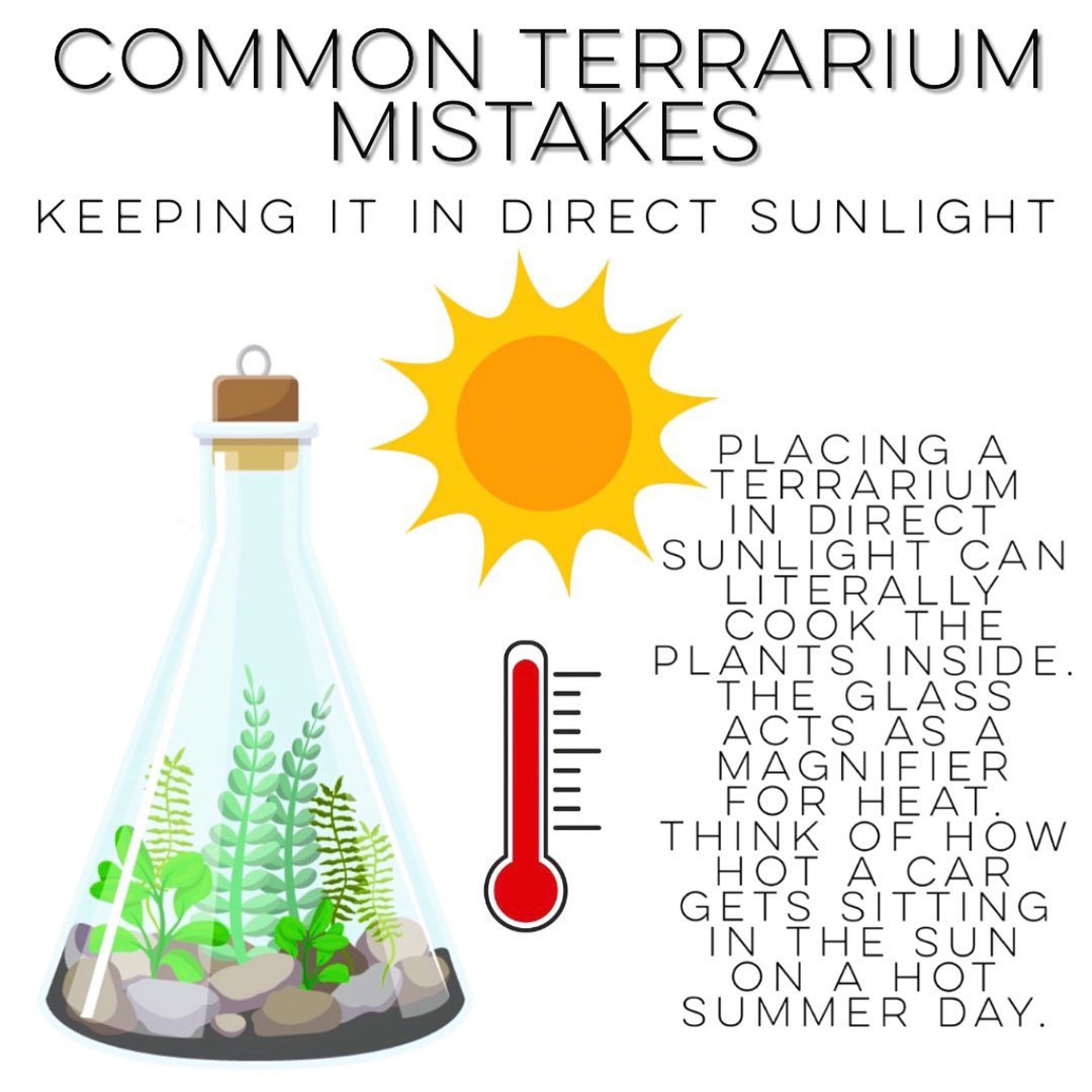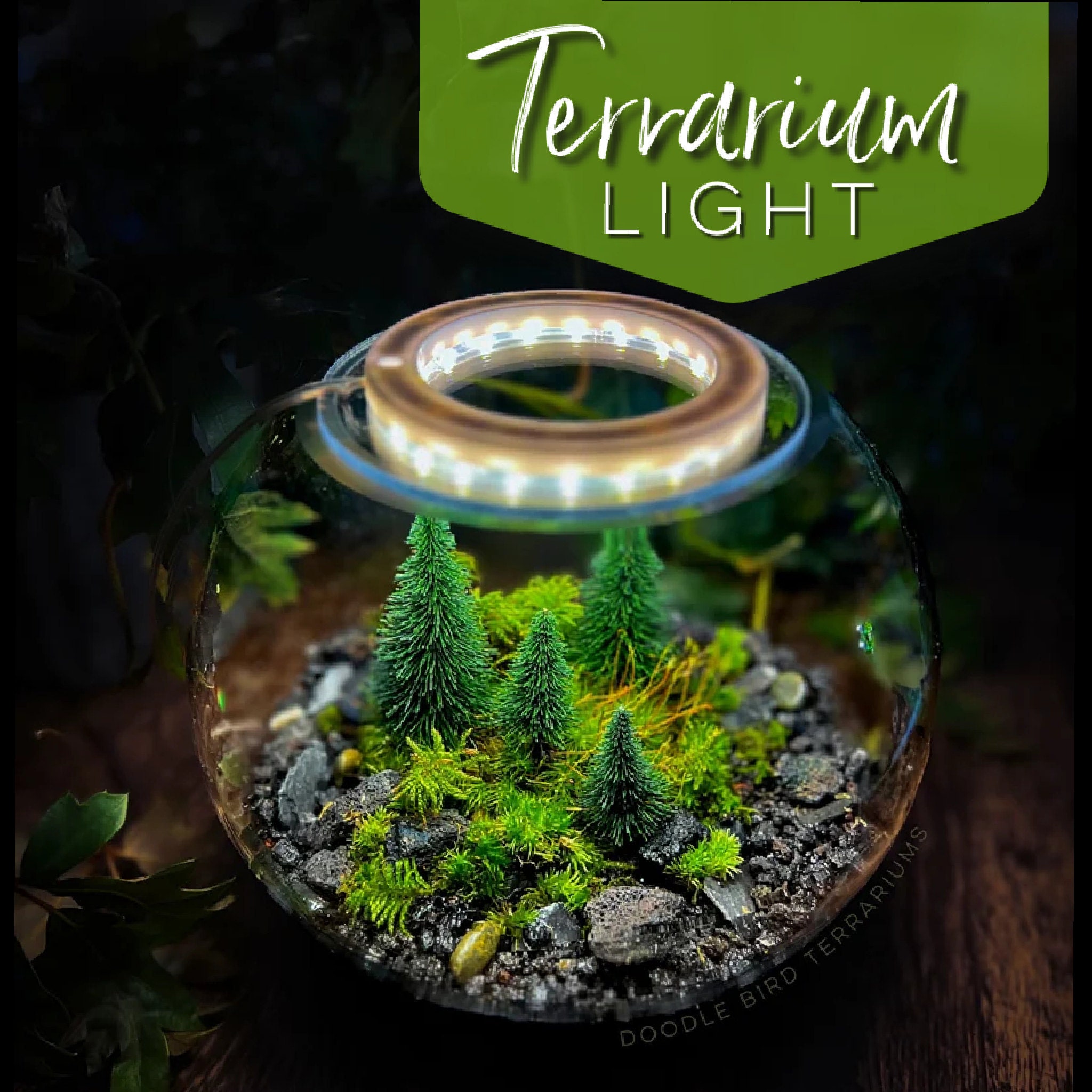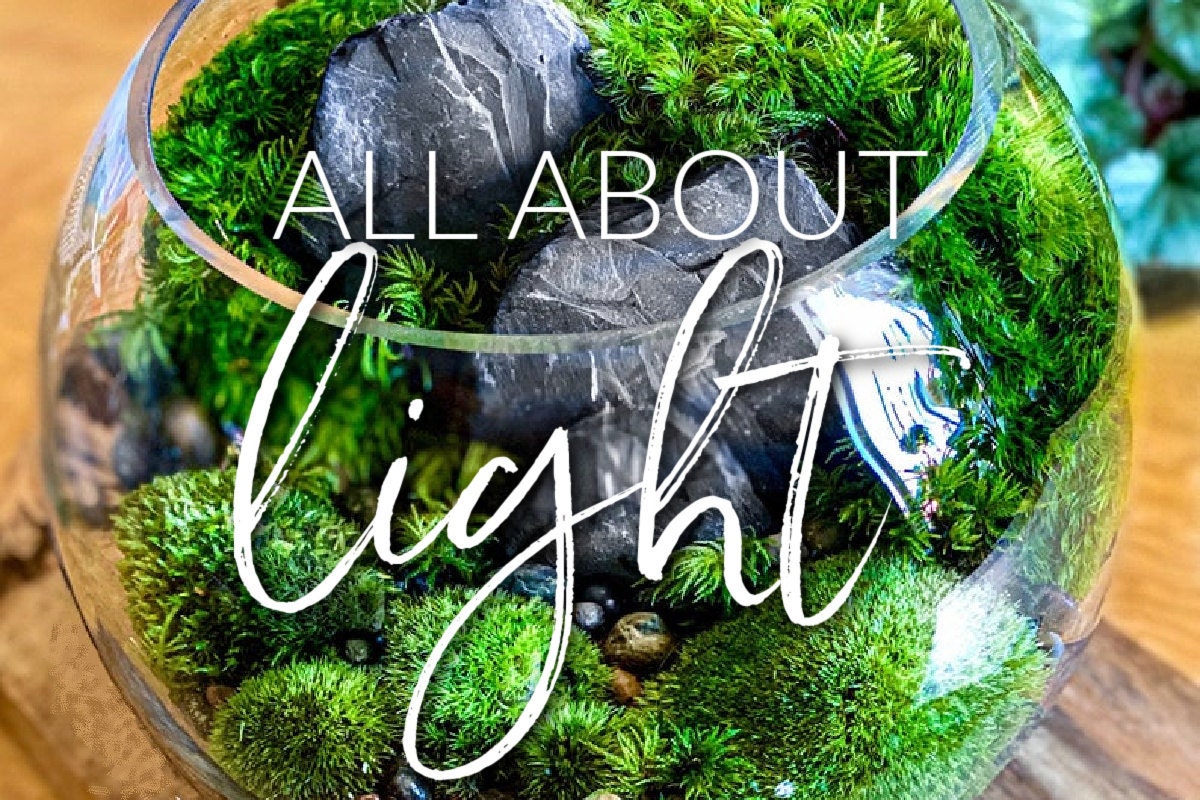Did you know that light is the single most important element to plant health? That's because without it plants cannot process water or nutrients; the sun gives them the energy they need to function. But each plant has different requirements for the amount of light energy needed. Moss, for example, usually prefers a shady location in it's natural environment, so its requirements are lower than, say, a cactus. But even a shady outdoor location receives much more light than a poorly lit indoor room. A dark corner of your home is not an appropriate place for a terrarium. However, you also never want to place it in direct sunlight, such as a south facing window, as the plants will quickly cook to death under the magnifying effects of its glass home.

So when it comes to providing the right amount of light for your terrarium plants, how do you know what is too little or too much? First, imagine your plants have eyes. Can they "see" the sky from where they are sitting? They don't necessarily need to be right in front of a window, but should be in view of the sky. That way they can still use the sun's energy rays at a level that suits their needs. This little trick of placing your terrarium in view of the sky, yet not in direct sun, is especially handy for determining how much sunlight low light plants like moss need. But when it comes to providing that light, you have options.
Specifically, there are two basic options for providing light for your terrarium plants: natural light and artificial.
Natural Light: As mentioned above, if you choose to place your terrarium near a window make sure it's not south facing as this position is most likely to be hot in the afternoon and scorch your moss from too much direct sunlight. If south is all you have then simply put the terrarium farther away, at least 6 or more feet to be specific. The best location for your terrarium would be one that gets indirect light, like a north facing window. You can place your terrarium anywhere from 1-6 feet away, possibly more, and it should be receiving just the right amount of light to thrive. Use the "see the sky" formula mentioned above.
Artificial Light: Let's say you don't have any quality natural light available but still want to keep plants, then artificial lighting is the solution! The best choice is a LED bulb or strip. These do not give off heat and normally have the color spectrum that plants need. Look for white daylight bulbs that have a color temperature range of 6000-6500k (they don't necessarily need to be labeled as "plant lights" as long as the color temperature is right). The lamp should be positioned close, within 10" of the top of your terrarium. Remember, the farther away it is placed the weaker the light rays are for the plants below.

A great option is our Terrarium Halo Light, which features a LED ring design and timer which can be set to 8, 10, or 12 hours.
In conclusion, terrarium plants are often categorized as "low light" but that doesn't mean they are "no light" so make sure your terrarium is getting the right amount whether it be from a natural or artificial source.
Shop Terrariums, Kits & Supplies


